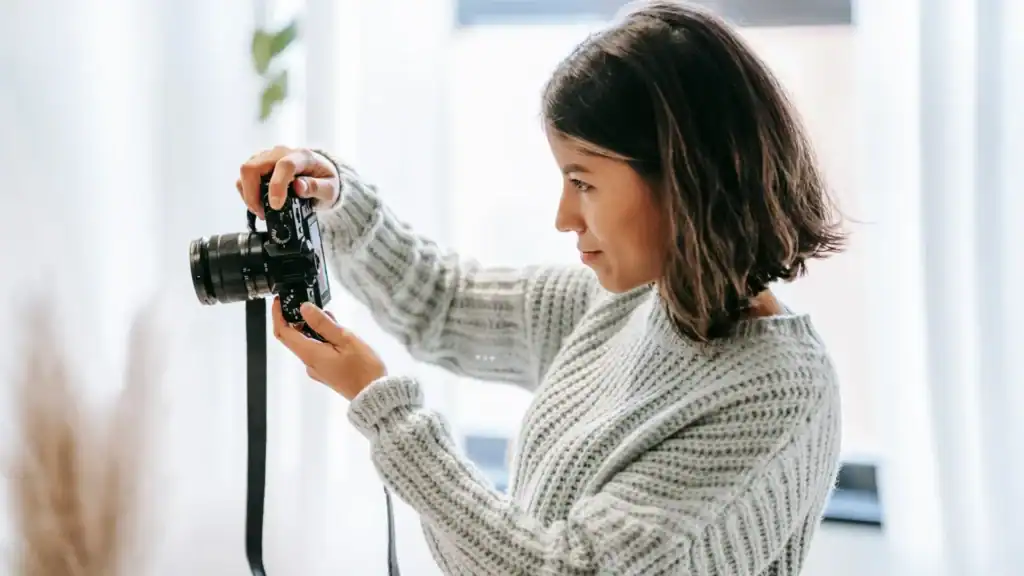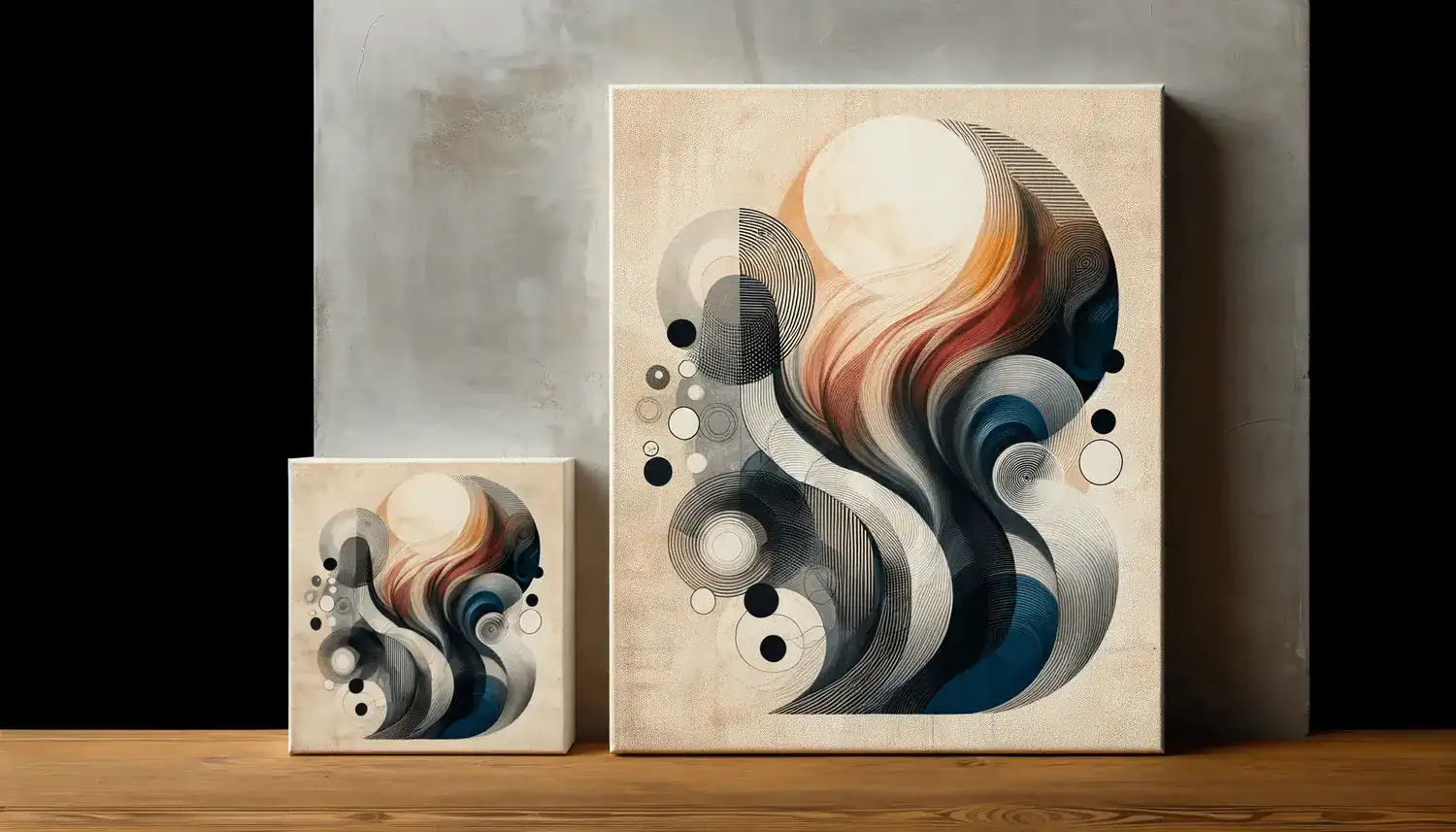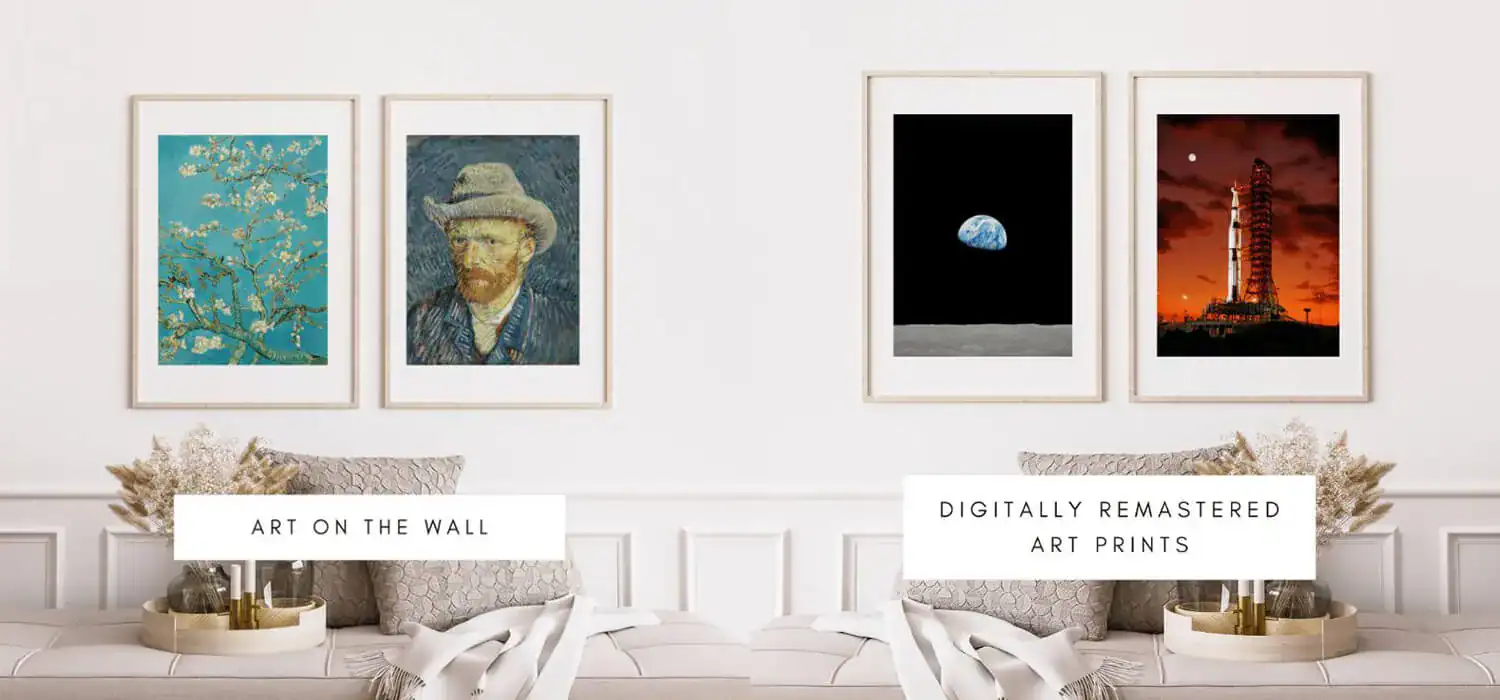Capturing your artwork in the best light can significantly influence how it’s perceived online. High-quality photos have the power to attract potential buyers and truly reflect the character of your art.
Start by focusing on image resolution to ensure that every detail and texture comes through clearly.
A solid camera setup is important, so think about investing in a good lens and tripod to achieve stability.
Next, don’t overlook your lighting techniques; natural light can enhance the vibrancy of your pieces, while diffused artificial lighting can mitigate harsh shadows when shooting indoors. Aim for consistency throughout your images, and make sure your artwork is showcased authentically.
Now, as you move on to choosing art reproduction methods, consider the impact of digital photography, the quality of online galleries, the importance of image resolution, and the effectiveness of lighting techniques to ensure color accuracy.
Choosing Background Options For Artwork
Choosing the perfect backdrop can really elevate the presentation of your art. Think about how different styles can either complement or overshadow your piece.
A solid color often creates a clean canvas, while textured surfaces add visual interest and depth.
If you’re feeling adventurous, consider natural settings; a lush garden or a simple wall can provide a unique context that tells a story.
When arranging your composition tips, don’t forget to pay attention to your camera settings. These small adjustments can make a big difference in how your artwork is displayed online.
Taking the time to refine your photo will surely help your art catch the eye of potential buyers.
What Are Effective Lighting Techniques?
Getting the lighting just right can truly transform how your artwork looks in photographs. It’s not just about showcasing your art; it’s about creating a visual representation that draws potential buyers in.
A fantastic technique to consider is using soft, diffused light.
This method helps to soften harsh shadows, allowing the colors in your pieces to pop vibrantly.
You can achieve this effect with softboxes or by taking advantage of overcast days, which provide perfect natural diffusion for your shots.
Another technique worth incorporating is even lighting. This aspect is key to ensuring every part of your artwork is visible and not lost in shadows.
A good rule of thumb is to position your light source at a 45-degree angle to the artwork, which promotes balanced illumination. These tweaks can elevate your product photography by enhancing high dynamic range, optimizing aperture settings, fine-tuning shutter speed, and improving the visual representation of your framed artwork.
Supporting Techniques for Effective Artwork Photography
- Soft, diffused lighting enhances color vibrancy and reduces harsh shadows.
- Using softboxes or natural overcast light can create ideal diffusion for artwork photography.
- Positioning the light source at a 45-degree angle ensures balanced illumination across the artwork.
- Optimizing camera settings such as aperture and shutter speed can improve the overall quality of the photographs.
Understanding Image Resolution For Listings
Getting your art noticed online can feel like a big task, but the right visuals can make all the difference. Image clarity plays a significant role in how potential buyers engage with your work.
Think of resolution as the number of pixels that form your images; more pixels mean sharper and more detailed visuals.
Those little squares, or pixels, come together to give your artwork its size and shape on a screen.
If your images lack quality, buyers might overlook your listing, thinking it doesn’t reflect professionalism. High-quality images can really enhance the perception of your work, ultimately leading to increased sales, so it’s important to focus on this aspect.
Finding the right resolution can vary depending on where you’re showcasing your art, so doing a bit of homework is key.
For instance, social media platforms have different requirements compared to online marketplaces.
Tips For Composition And Framing Artwork
Creating visually striking artwork isn’t just about the piece itself; it’s also about how you present it. Start by considering the Rule of Thirds.
Visualize a grid and position your piece along those lines or intersections.
This technique adds a touch of balance and intrigue, making your artwork pop like the best detail shots.
Feel free to experiment with breaking the rule; sometimes, those unexpected choices lead to exciting results!
Next, explore some framing techniques. Use natural elements to guide the viewer’s eye, enhancing the visual storytelling of your work.
The background should work in harmony with your art, adding depth without stealing the spotlight. Keep an eye on those fine details, as they can truly elevate your gallery presentation. </macro photography, detail shots, gallery presentation, visual storytelling, photo staging, and reflective surfaces create a stunning visual narrative that captivates the audience.
Artwork Presentation
- The Rule of Thirds is a fundamental principle in visual composition that enhances balance and interest.
- Framing techniques can significantly improve the viewer’s focus and understanding of the artwork.
- Effective background choices can add depth to the presentation without overshadowing the main piece.
- Attention to detail in staging can elevate the overall impact and appeal of the artwork in a gallery setting.
How To Achieve Color Accuracy In Photos
Capturing the true essence of your artwork can make a world of difference when sharing your portfolio online. Getting those colors right isn’t just a matter of aesthetics; it can directly influence art sales and how your pieces are perceived.
One of the first steps in this journey is color calibration, which involves adjusting your monitor for a more accurate representation.
When your screen matches the vibrant hues of your art, it elevates the entire experience for viewers.
Next up is lighting. Natural light is often your best friend in this process, offering a way to showcase color and texture capture without the harshness of artificial sources.
Setting up near a window can create a beautiful, soft glow, but steer clear of direct sunlight to avoid unwanted shadows. If you do opt for artificial lights, make sure they enhance the texture capture in your portfolio creation for art sales, improve social media visuals, and are suitable for virtual exhibitions in the desired file formats.
Camera Settings For Optimal Art Photography
Finding the perfect settings for your camera can truly elevate how your artwork is perceived. Start by diving into your camera’s features, whether you’re opting for manual or automatic modes.
Tweaking the ISO, aperture, and shutter speed significantly affects the outcome of your shots.
Choosing the right ISO setting can mitigate noise, allowing your details to stand out.
When adjusting aperture, consider the depth of field; it can really make your art pop. Lighting also plays a vital role—natural light often works wonders in ecommerce photography.
And don’t forget about your metadata; optimizing it can enhance your visibility on online platforms.
After ensuring your camera is set up correctly, you might want to think about how to achieve color accuracy in your photos. This not only contributes to the overall quality of ecommerce photography but also enhances visibility through effective watermarking, keyword optimization, SEO for images, and proper use of metadata across various online platforms.
Camera Settings and Ecommerce Photography
- Adjusting ISO can reduce noise and enhance detail visibility in images.
- Aperture settings influence depth of field, making subjects stand out.
- Natural lighting is often the best choice for capturing high-quality ecommerce photos.
- Optimizing metadata improves image visibility on online platforms and aids in SEO.
Editing Software For Enhancing Artwork Images
After perfecting the shot of your artwork, enhancing those images can truly bring your artistic vision to life. The right editing tools can help fine-tune the details and elevate your pieces.
Whether you’ve chosen to work with natural light or intricate lighting setups during your photo sessions, adjustments can highlight various aspects seamlessly.
Image cropping allows you to focus on what truly matters, making sure your work stands out to viewers.
Look for software that offers straightforward tweaks to brightness and contrast, as this can amplify the colors and textures beautifully. Paying attention to these elements can significantly boost your online presence and showcase your talent effectively.
Transitioning from getting the right camera settings to utilizing high dynamic range in photography can further enhance your art curation journey
Conclusion
Finding the perfect way to showcase your artistic creations is key to standing out in the crowded online market. By enhancing your image consistency, you can truly captivate potential buyers, drawing them into the unique story each piece tells.
To achieve this, it’s important to strike a balance between light and shadow, which often leads to a more striking visual branding.
Experimenting with various lighting conditions, from natural to artificial lighting, will help you discover what enhances your work the best.
And don’t forget about the power of editing software—refining your photos can elevate your artistic portfolio and make a lasting impression. What hurdles have you encountered while capturing your artwork? Are there particular HDR methods or creative showcase strategies that you find effective in addressing challenges related to artificial lighting, photographic equipment, image consistency, visual branding, or context shots?
.
Showcasing Artistic Creations
- Consistent imagery can increase brand recognition by up to 80%.
- Natural lighting is often preferred by photographers, as it can enhance colors and textures in artwork.
- Editing software can improve photo quality, with studies showing that edited images can increase viewer engagement by 60%.
- Using HDR techniques can help balance light and shadow, making artwork more visually appealing.
Originally posted 2025-08-19 16:47:06.





